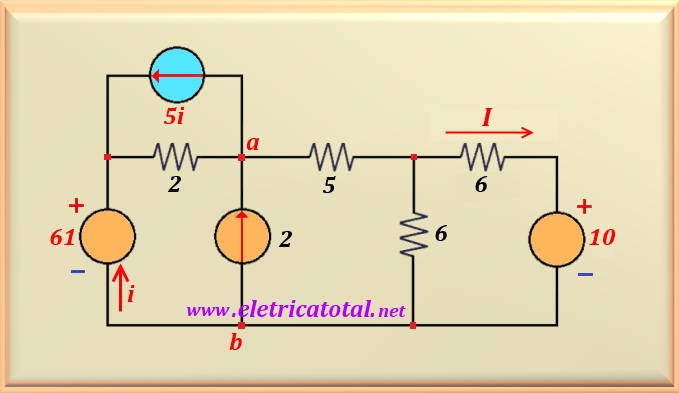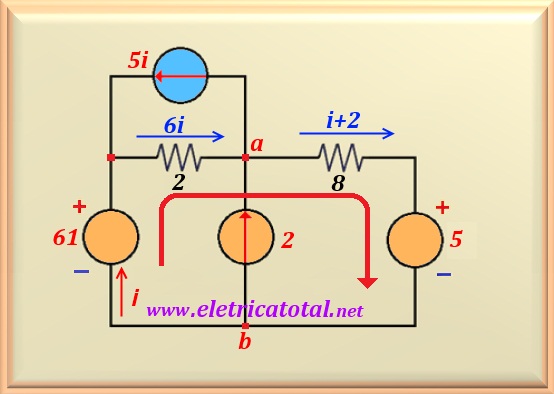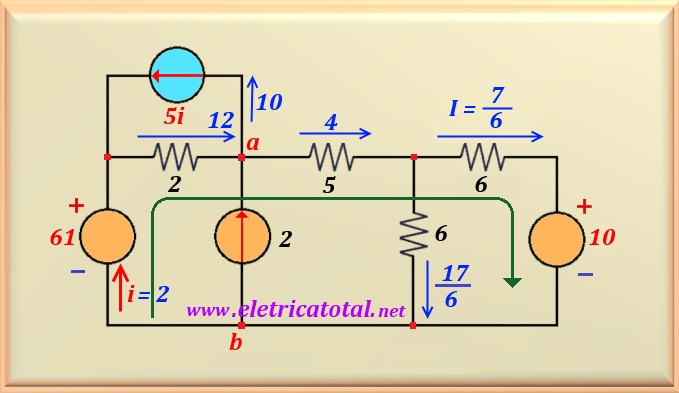Problem 15-7 Source:
Problem elaborated by the author of the site.
In the circuit shown in Figure 15-07.1, determine the currents i and I.
Solution of the Problem 15-7 -
Thévenin/Norton Method
To begin to solve the problem, let's calculate Rth between the points a-b as indicated by the dashed arrow green , for the circuit that
is inside the blue-dotted rectangle. By canceling the voltage source of 10 volts , clearly the two
6 ohms resistors are in parallel resulting a resistor of 3 ohms . Adding this value to the 5 ohms resistor that is in series, we get:
To calculate the value of Vth, we open the circuit at points a-b
and we calculate the voltage at the open circuit (we only consider the circuit that lies
inside the blue dotted rectangle). Since the voltage of 5 ohms will not circulate current, then the voltage of Thévenin is reduced to a resistive voltage divider between the two resistors of
6 ohms . This results in a voltage of:
In the Figure 15-07.2 we show the modified circuit so that we can
calculate what was requested in the problem.
Based on the circuit of the figure above, we can determine the value of i by making the mesh in the direction indicated by the arrow red . Starting with the voltage source of 61 volts , we have:
Solving this equation, we find the value of i , or:
To determine the value of I we must return to the original circuit and
draw the value of the known currents. Then, in the Figure 15-07.3 the
modified circuit is shown.
Making the equation of the mesh in the direction indicated by the arrow green , we obtain:
Solving this equation, we find the value of I , or:




